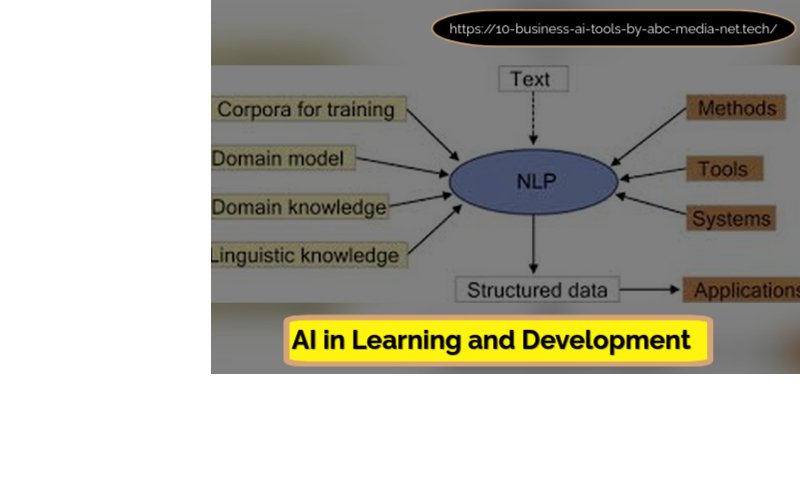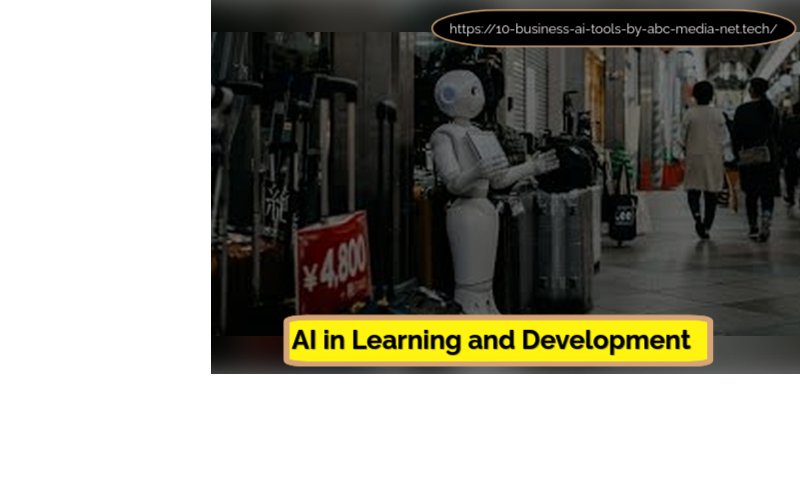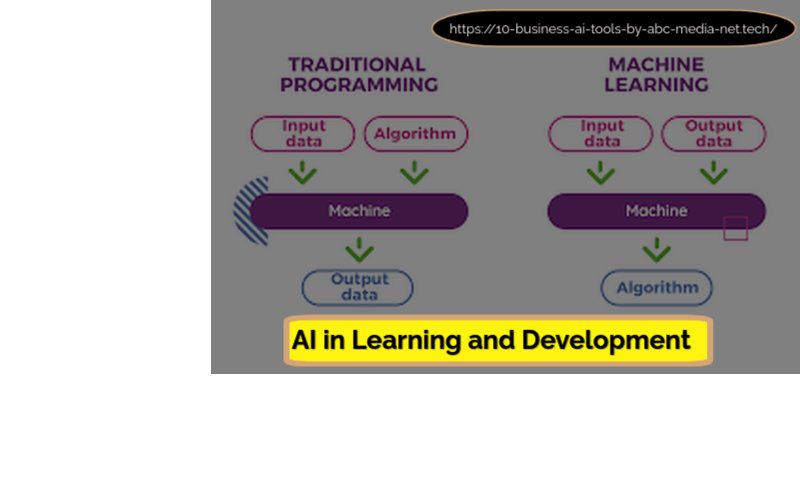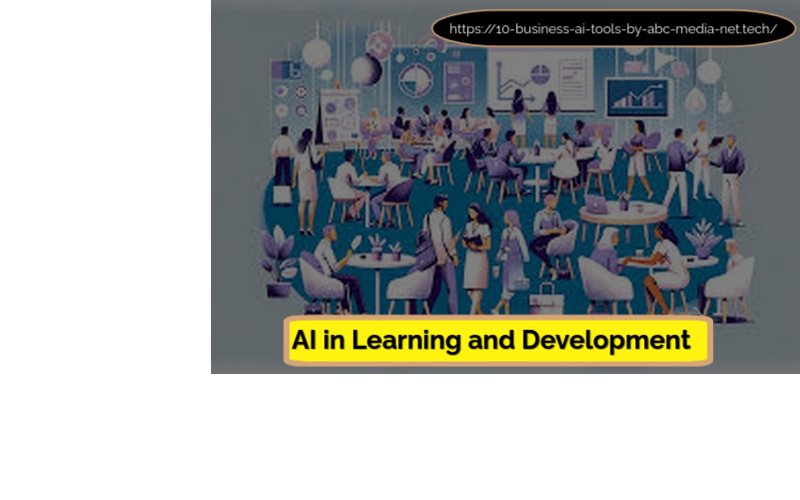Table of Contents
- Introduction
- What is AI in Learning and Development?
- Benefits of AI in Learning and Development
- 1 Personalized Learning
- Enhanced Engagement
- Efficient Content Creation
- How AI is Transforming Learning and Development
- Intelligent Tutoring Systems
- Adaptive Learning Platforms
- Predictive Analytics
- Implementing AI in Learning and Developmentfive
- .Steps for Integration
- Best Practices
- what are the cost implications of implanting AI in L&D programs
- How does the cost of AI implementation compare to traditional L&D methods
Challenges of AI in Learning and Development
Case Studies of Successful AI Implementations
FAQs
Conclusion
Introduction
Artificial Intelligence AI in learning and development is changing how we study and expand talents in agencies these days. The use of AI in studying and development enables create personalized studies that meet the particular wishes of each learner. This article will explore the function of AI in learning and development in mastering and improvement, its advantages, the way it transforms education, and a way to enforce it efficiently.
What is AI in Learning and Development?
AI in learning and improvement refers to using synthetic intelligence technologies to enhance academic stories. These technology can analyze facts, pick out styles, and make selections that enhance learning outcomes. By the usage of AI, companies can provide tailor-made education programs that adapt to individual learners’ wishes.
Key Technologies Involved

- Machine Learning: This era lets in structures to examine from statistics and improve over time.
- Natural Language Processing (NLP): NLP allows machines recognize human language, making chatbots more effective.
- Predictive Analytics: This analyzes past statistics to are expecting destiny performance and perceive ability gaps.
Benefits of AI in Learning and Development
1 Personalized Learning
One of the principle blessings of AI in studying and improvement is customized getting to know:
- Tailored Experiences: AI can assess a learner’s development and adapt the content material as a result, ensuring that everyone receives a getting to know enjoy acceptable to their level.
- Dynamic Content Delivery: As learners have interaction with materials, AI adjusts the problem based on their overall performance.
2 Enhanced Engagement
AI facilitates growth engagement through various techniques:
- Gamification: Incorporating recreation-like factors makes gaining knowledge of fun and interactive.
- Interactive Simulations: Learners can exercise abilties in a secure surroundings, enhancing retention.
3.Efficient Content Creation
Creating educational content can be time-consuming:
- Automated Content Generation: AI gear can speedy produce quizzes, films, and other materials, saving time for educators.
- Continuous Updates: AI can robotically replace content material based totally on new information or remarks.
How AI is Transforming Learning and Development

1. Intelligent Tutoring Systems
Intelligent tutoring structures provide personalized comments:
- These structures analyze learner interactions in actual-time, supplying steering tailor-made to man or woman development.
- They assist perceive information gaps, making an allowance for focused interventions.
2. Adaptive Learning Platforms
Adaptive learning platforms make use of algorithms to personalize academic reviews:
- These structures constantly check rookies’ competencies, adjusting content material transport based on their evolving wishes.
- This ensures that each learner receives a unique revel in that promotes premiere growth.
3.Predictive Analytics
Predictive analytics plays a vital role in figuring out skill gaps:
- By analyzing ancient overall performance information, agencies can proactively deal with areas desiring development.
- This permits for greater strategic training projects that align with commercial enterprise objectives.
Implementing AI in Learning and Development
1. Steps for Integration
To successfully combine AI in learning and improvement, organizations ought to comply with those steps:
- Assess Current Needs: Evaluate present schooling applications to perceive regions wherein AI can upload price.
- Choose the Right Tools: Select appropriate AI technologies that align with organizational goals.
- Pilot Programs: Start with a pilot software to check the effectiveness of AI packages before complete-scale implementation.
2. Best Practices of AI in Learning and Development
To make certain a hit implementation:
- Involve Stakeholders: Engage personnel in any respect levels to ensure purchase-in and accumulate precious insights at some stage in implementation.
- Continuous Improvement: Regularly investigate the effectiveness of AI gear and make modifications based totally on remarks.
- Training for Educators: Provide education for L&D professionals on a way to leverage AI efficaciously in their packages.
Challenges of AI in Learning and Development
While the benefits are vast, companies have to also keep in mind capacity demanding situations:
- Data Privacy Concerns: Ensuring compliance with information protection guidelines is essential while handling learner records.
- Resistance to Change: Some personnel can be hesitant to adopt new technology; addressing those issues via communique is critical.
- Quality Control: Maintaining exceptional content material generated by way of AI requires oversight from skilled educators.
What are the cost implications of implementing AI in L&D programs
Implementing AI in Learning and Development (L&D) programs comes with various cost implications that organizations must consider. Here’s a summary of the key cost factors associated with integrating AI into L&D:
1. Initial Investment Costs of AI in Learning and Development
- Infrastructure: Organizations often need to invest in new technology infrastructure to support AI tools. This may include cloud services, servers, and software licenses.
- Software Costs: Purchasing or subscribing to AI-powered learning management systems (LMS) can be expensive. The costs can vary significantly depending on the features and capabilities of the software.
- Development Costs: If custom AI solutions are needed, development costs can escalate quickly. Organizations may need to hire external developers or consultants with expertise in AI.
2. Ongoing Maintenance and Support of AI in Learning and Development
- Regular Updates: AI systems require ongoing maintenance and regular updates to stay effective and secure. These updates can incur additional costs.
- Technical Support: Organizations may need to budget for technical support to troubleshoot issues and ensure smooth operation of AI tools.
3. Training and Skill Development
- Employee Training: Employees will need training to effectively use new AI tools. This can involve direct training sessions, online courses, or workshops, all of which can add to overall costs.
- Hiring Experts: There may be a need to hire data scientists or AI specialists to manage and optimize AI systems, which can significantly increase payroll expenses.
4. Data Management Costs of AI in Learning and Development
- Data Preparation: Implementing AI often requires extensive data preparation, which can be resource-intensive. Organizations must invest time and resources in cleaning and organizing data for effective AI training.
- Data Security: Ensuring data privacy and compliance with regulations (like GDPR) may require additional investments in security measures and protocols.
5. Potential for Cost Savings
While there are significant costs associated with implementing AI, there is also potential for cost savings:
- Efficiency Gains: AI can automate routine tasks, reducing the workload for L&D professionals. This can lead to lower operational costs over time.
- Scalability: AI-powered platforms can deliver training to a large number of employees simultaneously, making it easier to scale L&D initiatives without proportional increases in cost.
- Improved Learning Outcomes: By personalizing learning experiences, organizations may see improved employee performance and retention rates, leading to better overall business outcomes.
6. Long-Term Considerations of AI in Learning and Development
Investing in AI for L&D is not just about immediate costs; organizations should also consider long-term implications:
- Return on Investment (ROI): It’s crucial to evaluate the expected ROI from implementing AI technologies in L&D. Effective measurement of learning outcomes can help justify initial expenditures.
- Competitive Advantage: Organizations that successfully integrate AI into their training programs may gain a competitive edge by developing a more skilled workforce faster than competitors.
Cost Implications of AI vs. Traditional L&D Methods

1. Initial Investment
- AI Implementation Costs: The initial investment for AI technologies can be substantial. Organizations need to consider costs for infrastructure, software, and training. This may include purchasing AI-powered learning management systems (LMS), cloud services, or custom solutions.
- Traditional L&D Costs: Traditional L&D methods often involve significant upfront costs as well, including hiring subject matter experts (SMEs), instructional designers, and trainers. Developing training materials can take considerable time and resources.
2. Ongoing Maintenance
- AI Systems: AI tools require regular maintenance and updates to remain effective. This involves ongoing costs for software updates, technical support, and potential hardware upgrades.
- Traditional Methods: Traditional methods also incur ongoing costs related to maintaining training materials and scheduling sessions. However, these processes are often more manual and labor-intensive.
3. Efficiency Gains
- AI Benefits: AI can automate many administrative tasks such as scheduling, tracking progress, and grading assessments. This automation can free up L&D professionals to focus on strategic initiatives rather than routine tasks, potentially leading to cost savings over time.
- Traditional Methods: Traditional L&D approaches often require extensive manual effort for administrative tasks, which can be time-consuming and costly in terms of labor.
4. Content Creation
- AI-Enhanced Content Creation: AI can significantly speed up the content creation process. For example, organizations often spend an average of 38 hours developing just one hour of training content using traditional methods. AI can reduce this time by up to 70%, allowing teams to create high-quality materials more quickly.
- Traditional Content Development: Developing training materials traditionally involves collaboration among multiple team members, which can slow down the process and increase costs.
5. Return on Investment (ROI)
- AI ROI Potential: The data-driven insights provided by AI in Learning and Development can help organizations measure the effectiveness of their L&D initiatives more accurately. By identifying which programs yield the best results, organizations can allocate their budgets more effectively. Some experts suggest that AI investments can lead to a 20% to 30% reduction in overall L&D costs.
- Traditional ROI Challenges: Measuring ROI for traditional L&D approaches is often more challenging due to a lack of real-time data and analytics capabilities. Organizations may struggle to connect training outcomes directly to business performance.
6. Scalability
- AI Scalability: AI-powered platforms can easily scale to accommodate large numbers of learners simultaneously without a proportional increase in costs. This is particularly beneficial for global organizations needing consistent training across various locations.
- Traditional Scalability Issues: Scaling traditional L&D programs often requires additional resources—more trainers, more materials—which can lead to increased costs.
7. Expertise Requirements
- Need for Specialists in AI: Implementing AI in Learning and Development may necessitate hiring data scientists or other specialists who understand how to manage and optimize these systems, adding to labor costs.
- Training Existing Staff: Traditional methods may require less specialized knowledge but still need ongoing professional development for trainers and educators.
Case Studies of Successful AI Implementations
Case Study 1: McKinsey & Company
McKinsey utilizes AI in Learning and Development-pushed answers to enhance its L&D activities globally:
- By monitoring employee studying traits, McKinsey tailors customized learning routes that align with man or woman profession paths.
- The business enterprise fosters a lifestyle of continuous gaining knowledge of through social collaboration structures powered by means of AI.
Case Study 2: Deakin University
Deakin University employs an AI assistant named Genie:
- Genie tracks student engagement with on line materials, providing tailor-made support based on utilization patterns.
- This proactive technique helps college students live heading in the right direction with their studies whilst receiving timely help.
FAQs
What is the primary motive of the use of AI in mastering and development?
The number one purpose is to decorate schooling packages by way of personalizing studying stories, automating administrative duties, offering real-time feedback, and analyzing learner performance records.
How does personalized mastering paintings with AI?
AI analyzes individual learner data to tailor content material delivery, adjust difficulty ranges, advise relevant resources, and create customized getting to know paths.
What are a few examples of AI programs in schooling?
Examples include clever tutoring systems that offer personalized remarks, adaptive gaining knowledge of platforms that modify content primarily based on progress, and predictive analytics equipment that perceive talent gaps.
What demanding situations might organizations face whilst imposing AI?
Organizations may also come upon facts privateness worries, resistance from employees, great control problems with computerized content era, and the need for ongoing schooling for educators.
How can agencies make sure successful integration of AI?
Successful integration entails assessing cutting-edge desires, choosing appropriate tools, piloting programs earlier than full-scale implementation, involving stakeholders at some stage in the procedure, and continuously improving based totally on comments.
Conclusion
The integration of AI in learning and development represents a extensive shift closer to more personalized, efficient, and tasty instructional reviews. By leveraging advanced technologies inclusive of machine learning and predictive analytics, organizations can optimize their training packages to meet the various desires in their staff efficiently.
As groups keep to evolve in a unexpectedly converting environment, embracing AI in Learning and Development will be essential for staying competitive even as fostering a lifestyle of continuous improvement among personnel. Moreover by following quality practices for implementation and addressing ability challenges proactively, groups can unlock the overall capability of artificial intelligence in reworking their studying projects for destiny fulfillment.
finally this article carries the key-word “AI in mastering and development” for the duration of at the same time as maintaining easy language for better clarity. If you need similarly changes or extra sections brought to attain about 3000 phrases or some other specifications, please allow me know!






